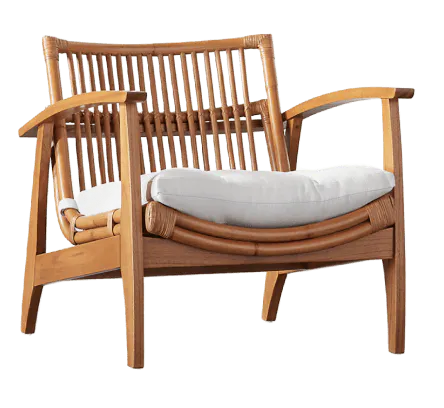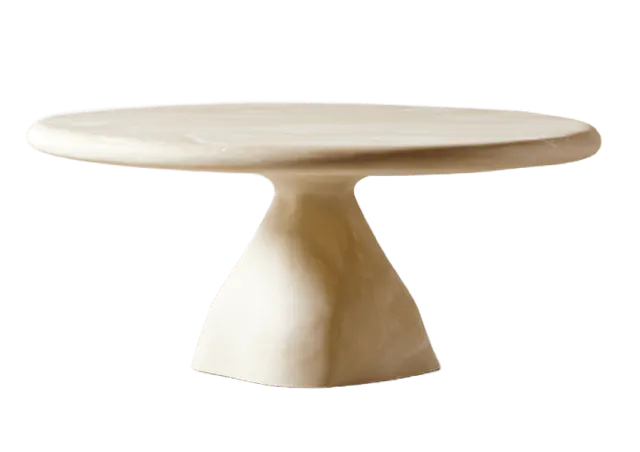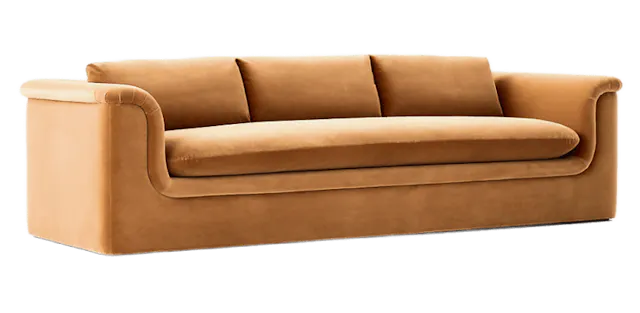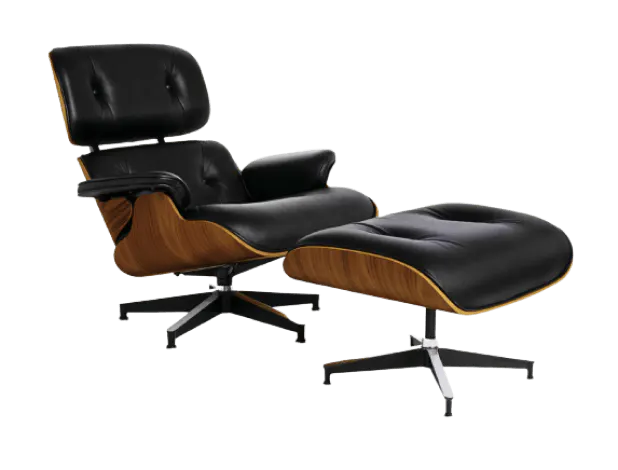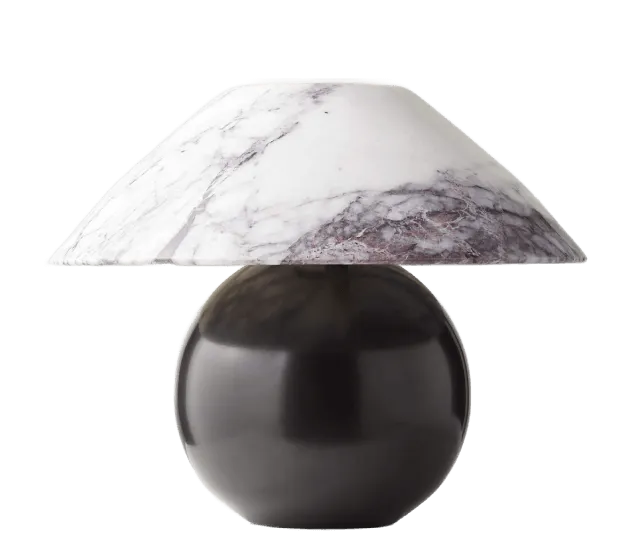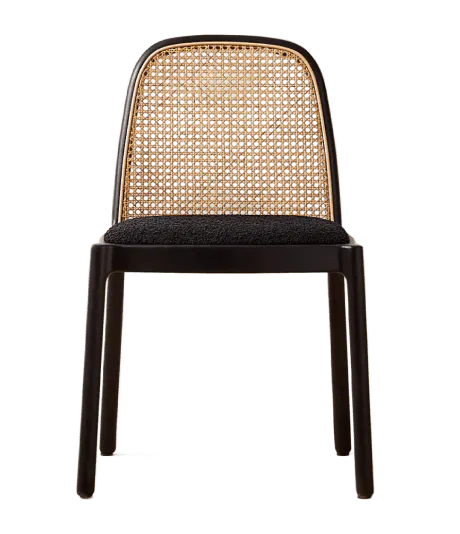What is a Standing Desk
A standing desk is a workspace designed to allow users to stand while working, often with adjustable heights to switch between sitting and standing.
It helps reduce prolonged sitting, encourages movement, and promotes better posture, circulation, and energy levels. Some models include features like motorized adjustments, built-in treadmill or cycling options, and ergonomic accessories to enhance comfort and productivity.
Health Benefits of Standing Desks
Some things sneak up on you, like sitting. Hours go by, and it feels fine—until your legs feel stiff, your back starts aching, and your energy vanishes. The human body wasn’t built to sit all day, yet modern life makes it unavoidable. And research? It’s clear. Too much sitting is linked to serious health problems.
Reduces Risk of Chronic Diseases
Sitting for long periods slows metabolism, leading to weight gain, insulin resistance, and cardiovascular issues. Reduced calorie burn and poor sugar processing increase the risk of type 2 diabetes and heart disease. Standing desks help counteract these effects by promoting movement
Improves Blood Circulation & Regulates Blood Sugar
Prolonged sitting slows blood flow, causing leg swelling and increasing the risk of varicose veins or blood clots. Standing encourages circulation, keeping muscles engaged and preventing stiffness. Additionally, standing after meals helps regulate blood sugar levels, reduces energy crashes, and supports long-term health.
Weight Management & Energy Expenditure
Weight loss isn’t just about intense workouts or strict diets. It’s about the small, everyday choices that add up over time—like choosing to stand instead of sit.
While it may not seem like much, increasing standing time throughout the day can influence overall energy expenditure, helping with weight control and long-term health.
Helps Prevent Weight Gain
A sedentary lifestyle makes it easier to gain weight by reducing calorie burn and slowing metabolism. Sitting for long hours encourages the body to store fat rather than use it for energy, increasing the risk of gradual weight gain.
Standing desks help counteract this by introducing movement into the workday. When people stand, they naturally shift their weight, engage core muscles, and occasionally pace, all of which contribute to a more active metabolism.
While standing alone isn’t a substitute for exercise, it serves as a foundation for increasing daily movement. Pairing it with brief walking breaks, stretching, or balance board use creates regular, low-intensity physical activity.
These small movements help maintain a slightly more active metabolism, supporting long-term weight regulation without requiring drastic lifestyle changes.
Boosts Energy Levels
Sitting for long hours slows blood circulation, reducing oxygen flow to the muscles and brain, leading to fatigue and sluggishness. This drop in metabolic activity makes it harder to concentrate and stay productive. Standing improves circulation, keeping energy levels steady and preventing the mid-afternoon crash that often accompanies prolonged sitting.
Alternating between sitting and standing throughout the day helps sustain focus and reduces reliance on caffeine for energy boosts.
While standing desks aren’t a weight-loss solution, they create an environment that encourages natural movement. Over time, these small adjustments help maintain a healthier balance, preventing the negative effects of prolonged sitting.
Improved Posture & Back Pain Relief

Image: Daycia Height Adjustable L-Shape Standing Desk
Slouching isn’t just a bad habit—it’s a slow-motion injury. Hours spent hunched over a desk shift the spine out of alignment, stretching muscles in ways they weren’t meant to be stretched.
The body adapts, but not in a good way. Stiffness sets in. Shoulders round forward. The lower back starts aching. Before long, what was once an occasional discomfort becomes a chronic issue.
Encourages Good Posture
Sitting for long periods makes it too easy to slump. The head drifts forward, the back curves, and pressure builds on the neck and shoulders.
Over time, poor posture weakens the muscles that support the spine, making it harder to sit or stand correctly. Standing desks naturally encourage better alignment. When adjusted to the right height, they position the screen at eye level, keeping the back straight and shoulders relaxed.
The spine isn’t designed to hold a hunched posture all day. Standing allows for a more neutral position, where the head stays balanced over the shoulders, reducing strain on the neck and upper back.
And posture isn’t just about comfort—it affects breathing, circulation, and even mood. Good alignment helps the body function more efficiently, preventing fatigue and tension from creeping in.
Reduces Lower Back Pain
Back pain doesn’t happen overnight. It builds gradually, a result of small daily habits that put stress on the spine. Sitting for extended periods compresses the discs in the lower back, reducing circulation and increasing stiffness.
The longer the body remains in a static position, the more pressure accumulates in the lumbar region, leading to discomfort and, in some cases, long-term spinal issues.
Adjustable desks offer a simple way to break the cycle. Research shows that alternating between sitting and standing can reduce chronic lower back pain by up to 32% within a few weeks.
The key is movement—standing allows the spine to decompress, reducing pressure on the vertebrae and improving blood flow to the muscles that support the back. Shifting between postures throughout the day keeps the lower back from locking up, preventing stiffness from setting in.
Strengthens Core Muscles
Sitting for long periods weakens the core, forcing the spine to bear more weight and making good posture harder to maintain. In contrast, standing naturally engages the abdominal and lower back muscles, strengthening the deep stabilizers that support the spine and reducing the risk of musculoskeletal issues.
While a standing desk isn’t a workout, it promotes subtle movements like shifting weight and engaging the core, which add up over time. Stronger muscles lead to better posture, and better posture means less pain—a simple change with lasting benefits.
Productivity & Mental Well-being
Sometimes, the biggest obstacle to getting things done isn’t the workload—it’s the chair. Hours of sitting can leave the body stiff and the brain sluggish. Movement, even subtle changes in posture, makes a difference in how the mind stays sharp throughout the day.
Enhances Focus & Concentration
Long periods of sitting don’t just affect posture—they slow down brain function. Blood circulation decreases, reducing the flow of oxygen and nutrients to the brain. The result? Mental fog, fatigue, and a wandering mind. Standing desks counteract this by keeping the body slightly more engaged.
When people stand, their muscles remain active, which helps maintain steady blood flow and oxygen delivery. This keeps cognitive functions running more smoothly, reducing lapses in attention and boosting focus.
Increases Productivity
Productivity isn’t just about working harder—it’s about working smarter. Employees using standing desks often report higher efficiency, fewer distractions, and better workflow.
Several factors contribute to this improvement. For one, standing reduces physical discomfort. Back pain, stiffness, and poor posture are common reasons for loss of focus during long work sessions.
Another key element is energy. Long sitting sessions drain stamina, leading to sluggishness. Alternating between sitting and standing keeps energy levels more consistent. People who use standing desks often find themselves taking fewer breaks simply because they don’t feel the same level of fatigue.
Improves Mental Health
Sitting for long hours can create a sense of stagnation, amplifying stress, anxiety, and even mild depression.
Movement, even subtle shifts from standing or adjusting posture, triggers endorphin release—the body’s natural mood boosters—helping to reduce stress and improve overall well-being. Standing also helps regulate cortisol, the hormone responsible for stress responses, preventing it from building up unchecked and leading to burnout.
Beyond the biological benefits, movement fosters a sense of control and engagement. Work environments that encourage standing and activity often report higher job satisfaction and better moods.
Small habits like standing during calls, stretching between tasks, or taking short walks contribute to a culture that prioritizes mental well-being. While not a cure-all, a standing desk helps maintain physical and mental balance, preventing the lethargy that often leads to burnout.
Optimal Use of Standing Desks

Image: Schwenk 47.4'' W Height Adjustable Rectangle Standing Desk
Just standing all day won’t fix the problem—neither will sitting all day. The key is balance. A standing desk is a tool, not a cure-all. When used right, it can ease back pain, boost circulation, and improve focus. Used incorrectly, it can cause fatigue and strain.
Balance Sitting & Standing
A good rule: split your time 50-50 between sitting and standing. Standing for eight hours straight isn't better than sitting for eight. Both can cause issues. The goal is movement.
Experts suggest:
Stand 15 to 30 minutes per hour if you're new to it.
Work up to a 2:1 sitting-to-standing ratio as you adjust.
Change positions every 30 to 60 minutes to avoid fatigue.
Small movements help. Shifting weight from one foot to another, stretching, or walking a few steps keeps blood flowing and muscles engaged.
Maintain Proper Ergonomics
A standing desk will not help much if it's not set up correctly. Poor ergonomics can lead to strain, discomfort, and even injury.
Monitor height: The screen should be at or slightly below eye level—no tilting your head up or down.
Desk height: Arms should rest at a 90-degree angle while typing. Wrists should stay straight.
Keyboard and mouse: Keep them at elbow height. Wrists should float, not press against the desk.
Chair selection: A good ergonomic chair is important for sitting breaks.
If your body feels sore, something needs adjusting. Small tweaks make a big difference.
Use Anti-Fatigue Mats & Footwear
Standing on a hard floor for hours? Not a good idea. The body absorbs all that pressure, leading to soreness in the feet, knees, and lower back.
Anti-fatigue mats: These provide cushioning and reduce strain on the legs.
Supportive shoes: Soft soles and arch support help prevent foot pain.
Footrests or balance boards: They encourage subtle movement to keep muscles engaged.
A standing desk setup should be comfortable. If it isn’t, adjustments are needed. A little effort now can prevent long-term discomfort.
Movement & Physical Activity Integration
Standing desks are a step in the right direction, but standing still for hours? Not much better than sitting. The human body thrives on movement—small shifts, stretches, and even slow-paced walking keep muscles active, circulation flowing, and stiffness at bay.
A sedentary lifestyle isn’t just about sitting too much; it’s about being still too long in any position.
Incorporating Treadmill Desks & Active Breaks
For those who can multitask, treadmill desks allow users to walk at a slow pace while working. Studies suggest that even walking at just 1–2 mph can improve focus, burn calories, and reduce the risks associated with prolonged sitting.
While not practical for every workspace, treadmill desks provide a simple way to integrate movement into the workday without requiring extra time.
But walking while working isn’t the only way to stay active. Small movements throughout the day add up. Even simple adjustments make a difference:
Pacing during phone calls burns more energy than standing still. Instead of sitting through long conversations, walking around the office (or even in place) can increase daily step count without disrupting work.
Stretching every hour keeps muscles loose, reducing tension in the neck, back, and shoulders. Desk jobs promote stiffness, but a quick stretch session can counteract this.
Taking the stairs instead of the elevator is one of the easiest ways to sneak in extra movement. A single flight of stairs burns roughly 1.5 times more calories than walking on flat ground.
Active breaks are more than just a way to avoid stiffness—they keep energy levels stable. Whether sitting or standing, staying in one position for too long causes fatigue. The key? Keep the body engaged with regular movement.
Alternating Between Sitting & Standing
Standing too much isn’t ideal, either. Just as prolonged sitting strains the lower back and hips, excessive standing can cause foot pain, joint stiffness, and circulation issues. The best approach is alternating between sitting and standing throughout the day, making small adjustments to posture and movement.
A sit-stand desk, like this 40-inch white adjustable desk, makes this transition easy, allowing users to switch positions as needed. A good balance looks something like this:
Stand for 15–30 minutes per hour to avoid excessive strain. New users should ease into standing time rather than switching abruptly.
Shift weight frequently from one foot to another—this keeps muscles engaged and prevents lower-body fatigue.
Use a footrest or balance board for subtle movement. Balance boards activate core muscles and encourage micro-movements that prevent stiffness.
Standing isn’t a cure-all. It’s about variety. Switching between sitting, standing, and walking creates the best environment for long-term comfort and health.
Creating a Movement-Friendly Workplace
An individual’s activity level isn’t just about personal habits—it’s shaped by workplace culture. Environments that encourage movement make it easier for employees to stay active without feeling like they’re breaking office norms.
Employers who prioritize movement-friendly workspaces see benefits in employee productivity, engagement, and overall well-being.
Ways to integrate movement into the workday include:
Walking meetings replace traditional sit-down discussions, helping boost creativity and engagement while encouraging light exercise. Studies show that movement stimulates cognitive function, making walking meetings ideal for brainstorming sessions.
Standing breaks every 30–60 minutes give employees a chance to stretch, walk, or adjust their posture. Even a two-minute movement break can improve circulation and prevent muscle tightness.
Flexible workstations with sit-stand desks, adjustable monitors, and open spaces encourage posture changes throughout the day. The more adaptable the environment, the easier it is to stay active.
A workspace designed with movement in mind improves health; it also keeps people alert, engaged, and more productive.
Choosing the Right Standing Desk

Image: Normandie 66.1'' W Height Adjustable L-Shaped Standing Desk with Cabinet, Black/Brown
A standing desk isn’t just a piece of furniture—it’s an investment in health and productivity. The wrong one? Frustrating, uncomfortable, and likely to end up unused.
The right one? Smooth transitions, proper ergonomics, and long-term benefits. But with so many options, picking the best fit depends on budget, workspace, and daily habits.
Sit-Stand Desk vs. Treadmill Desk
Standing desks come in two main types: traditional sit-stand desks and treadmill desks. Both reduce sedentary time, but they serve different needs.
Sit-stand desks: Designed for alternating between sitting and standing. These are the most common and come in manual or electric versions. Best for users who want flexibility but don’t need constant movement.
Treadmill desks: Combine a standing desk with a treadmill base. They allow for light walking while working, helping users stay active throughout the day. Ideal for tasks like reading emails or attending virtual meetings but less practical for precision tasks like typing or detailed design work.
While treadmill desks help with movement, they require extra space, cost more, and may not be practical for every job. Noise and stability can also be issues, making sit-stand desks the better choice for most people.
Manual vs. Electric Adjustable Desks
The ease of switching between sitting and standing affects how often a desk is used properly. That’s where adjustability comes in.
Manual desks: Lower-cost option. They require physical effort—usually a crank or a lever—to adjust height. Works well for occasional users, but frequent adjustments can become annoying over time.
Electric desks: Higher upfront cost but more convenient. Adjust the height with the press of a button, making it easy to switch postures throughout the day. Many models include memory presets, allowing users to save preferred heights for quick transitions.
Electric standing desks also tend to have quieter and smoother movement, an advantage in shared workspaces. Some even include collision detection sensors to prevent accidents.
Electric models are worth the investment for those who adjust height multiple times a day. But manual options can work just fine for budget-conscious buyers who won’t be switching positions often.
Best Options for Home Offices & Remote Workers
Home offices require a different approach. Not everyone has room for a full-standing desk, and price plays a bigger role when buying for personal use rather than an office-provided workstation.
Compact standing desks: Smaller footprint, ideal for tight spaces. Many come with wheels for flexibility in multi-purpose rooms.
Desktop converters: A budget-friendly way to turn a regular desk into a standing desk. These sit on top of an existing desk, like this black standing desk converter, and can be adjusted to standing height. However, they add extra height, which can sometimes affect ergonomics.
Wall-mounted standing desks: A space-saving option that attaches directly to the wall. Works well in small apartments or dedicated work nooks but lacks adjustability.
For remote workers, comfort, space efficiency, and price matter most. A cluttered or poorly designed setup can lead to just as many posture issues as a bad chair.
Regardless of the choice, ergonomics should be the priority—a good ergonomic desk won’t help much if the monitor is too low, the keyboard is at the wrong angle, or the workspace is cramped.
Final Thoughts
Sitting all day isn’t just uncomfortable—it’s harmful. A standing desk helps break that cycle, improving posture, circulation, and overall health. But it’s not just about standing; balance is key. Alternating between sitting and standing, moving regularly, and maintaining good ergonomics make all the difference.
So, whether in an office or at home, making the shift to a standing desk isn’t just a trend—it’s a long-term investment in health and productivity. Start small, find what works, and keep moving.
Looking for a smarter way to upgrade your workspace? Dupe helps you find budget-friendly alternatives in seconds.
FAQ
How does a sit-stand desk impact work productivity?
A sit-stand desk helps office workers stay engaged and alert by reducing sedentary behavior, which improves cognitive function, mood, and energy levels. Switching between sitting and standing throughout the day minimizes fatigue and can lead to noticeable boosts in focus and efficiency over time.
Can standing at work help with weight management?
Standing burns more calories than sitting and encourages movement, supporting weight management. When combined with active habits like walking breaks and stretching, a standing desk can help reduce the risk of weight gain and improve posture over time.
What are the health benefits of reducing sedentary behavior at work?
Reducing sedentary behavior lowers the risk of heart disease, diabetes, and metabolic issues. Alternating between sitting and standing throughout the day improves circulation, reduces weight gain risk, and eases strain on the legs and feet, promoting better occupational health.
Does standing at work help improve mood and energy?
Sit-stand desks improve mood and energy by reducing the negative effects of prolonged sitting. Research shows that office workers using these desks report better moods and less discomfort, including neck pain, than those who remain seated all day.
How much time should be spent standing at a sit-stand desk?
Experts recommend alternating between sitting and standing every 30 to 60 minutes to reduce discomfort and prevent fatigue. Adjustable desks allow flexibility, encouraging balance between standing, sitting in a comfortable chair, and moving throughout the day to promote proper posture and overall health.








